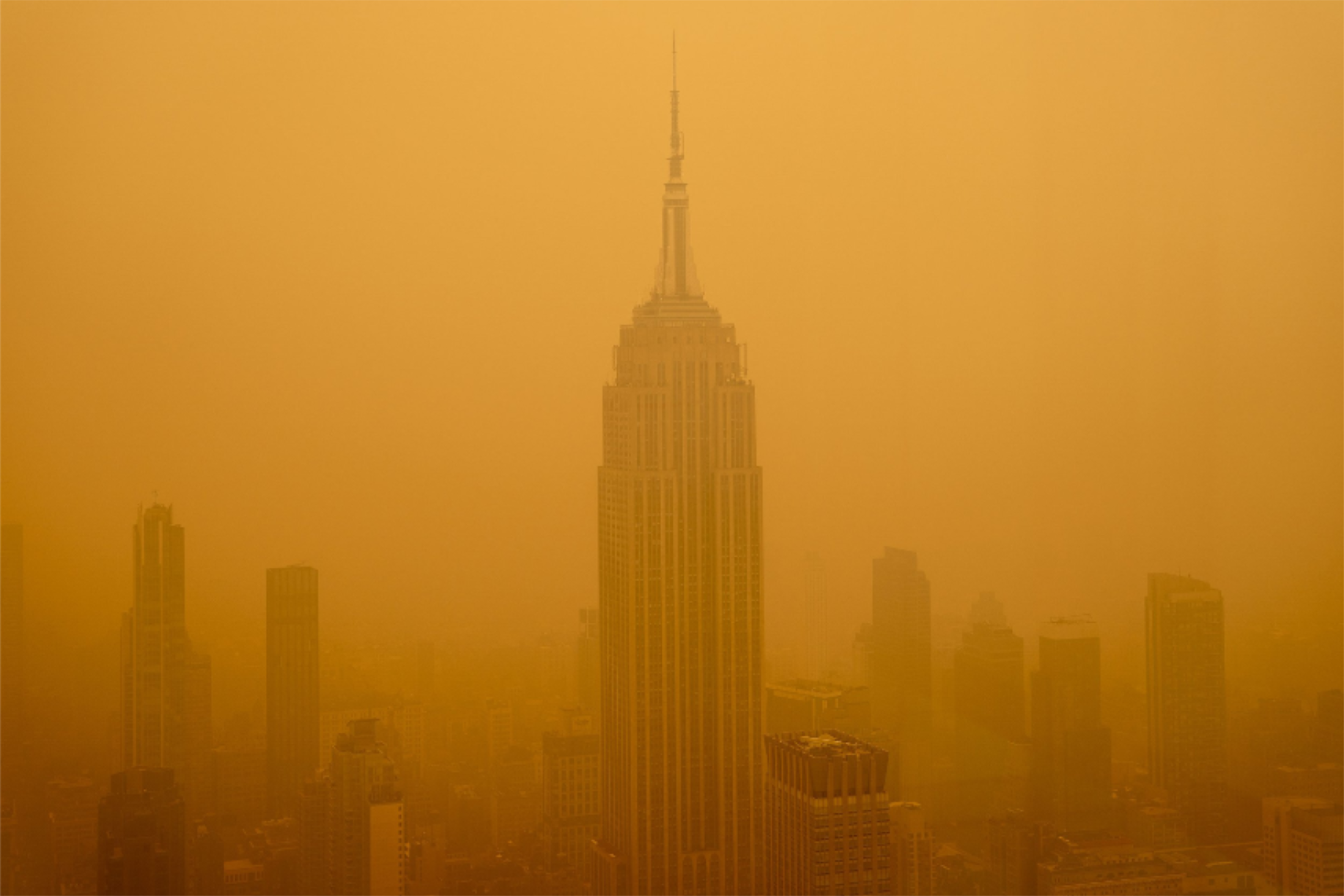By Sarah Bell ‘25
Staff Writer
On Wednesday, June 7, New York City recorded the worst air quality in the world, CNBC reported. According to the Guardian, at a reported 195 micrograms per cubic meter made up of small particulate matter, the sky had turned from a “milky white” to a harsh orange color. The number of particles far exceeded normal levels based on the city’s national air quality standard, which is typically around 12 to 35 micrograms of small particulate matter, as stated by New York City’s Environmental and Health Data Portal.
The worsened conditions are due to the recent wildfires erupting in Canada, NBC New York reported. The Guardian reported that the wildfire smoke started to drift southwards, with CNN detailing the impacts on neighboring areas including parts of New England, the Midwest and the overall Northeastern United States. Chalkbeat New York informs that the smoke has led to school closures and outdoor activities being canceled, as well as safety warnings for elders, children and folks with previous heart or lung deficiencies, due to the poor air quality. The air quality continued to be over 100 micrograms for a couple of days after, as reported through the air quality index.
In a Guardian article, Environmental Scientist Marshall Burke of Stanford University described the conditions as “the worst by far, I mean, Jesus, it was bad,” calling the record-breaking air quality a “historic event.”
According to Stanford researchers cited in the same article, the wildfire smoke encompassed a mix of soot, dust and debris, creating a pillar of smoke that has affected Americans at 27.5 micrograms of small particle matter per cubic meter on average. The New York Department of Health specifies the mixture is known as PM2.5, an air pollutant that causes the air to become hazy when its levels are elevated. According to the Department of Health, the air pollutant is most apparent when there is a lack of wind, and if inhaled, it can lead to severe health conditions or death.
Due to the rampant changes in weather conditions, the city's abnormal smoke is a reminder that climate change needs to be addressed, especially for the marginalized individuals who are impacted the most, InsideClimate News stressed.
As Shiv Soin, a co-executive director of the tri-state youth-led nonprofit TREEAge explained in InsideClimate News, “New York City and New York State have been bombarded with the impacts of the climate crisis that are disproportionately felt by millions of our residents that are people of color and that are lower income.”
According to InsideClimate, despite the worsening air quality, many public laborers have had to risk their health. According to NBC News, the city’s hazard mitigation plan has only a brief mention of wildfire smoke compared to West Coast states. As stated by Professor Peter DeCarlo of Johns Hopkins University in the NBC article, “people on the East Coast aren’t used to seeing these types of situations. There was a much slower response.”
Although the air quality has improved since early June, InsideClimate reported that the recurrence of wildfire smoke is quite likely. Therefore, pushing out information and acknowledgment of the conditions is imperative for the future of our health and the fight against climate change. The same article emphasized that in order for this process to begin, it is crucial to develop comprehensive policies that safeguard marginalized communities.
In one article, InsideClimate News explained that, “Some states, such as California and Oregon, already have adopted regulations to protect outdoor workers from wildfire smoke.” The same article suggested that adapting the models of states that have struggled with the smoke can be a start to protecting a great majority of the city.

